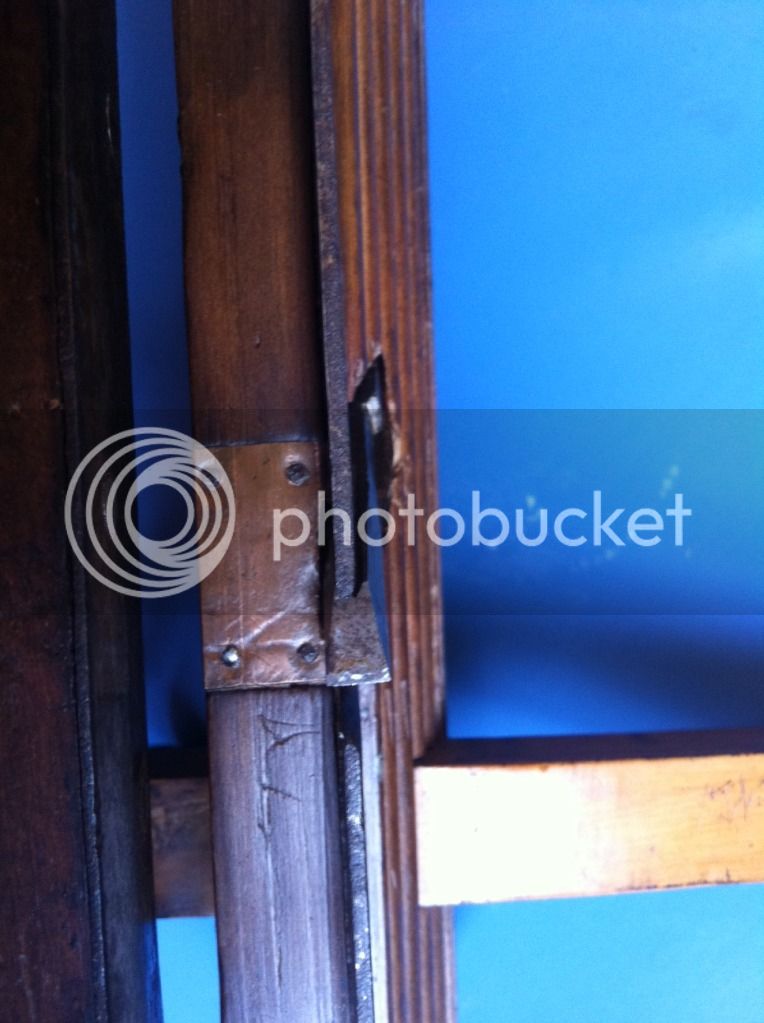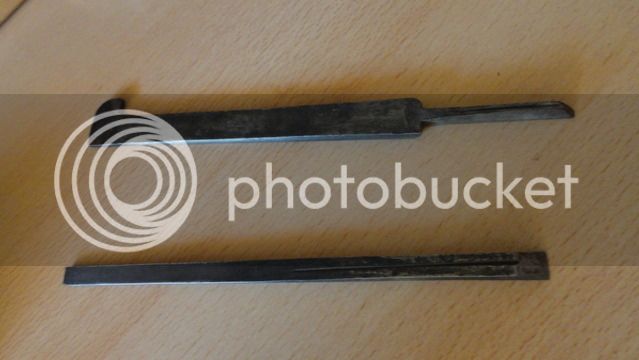Corneel
Established Member
With all these brilliant British planes lately I decided to post some pictures of my latest aquisition. An old Dutch plow plane. "Veerploeg" we say in Dutch. It wasn't cheap, I didn't find it early morning on a muddy field behind the defunct toasters. I paid big bucks for it. But it will probably be the closest I will ever get to one of these fabulous 17th and 18th century, hand carved and very expensive Dutch planes.
It's a rather late model from 1847. No makers stamp alas. It's nice to see there where still a few dedicated planemakers around who made these beautifull pieces. Apart from the iron, which doesn't fit at all, the plane is complete. The fence is nicely decorated, and the stock also has some nice decorative beads. An iron skate and an iron wear plate on the fence. The two spurs are atached to the stock with a single wooden pin. The fence has iron stirrups inside, which are tightened up against the spurs with these big nuts.
All in all it looks a bit crude, apart from the wood carvings. But it's a solid piece. I hope to find a better iron and see if it also works as nicely.
Enjoy.
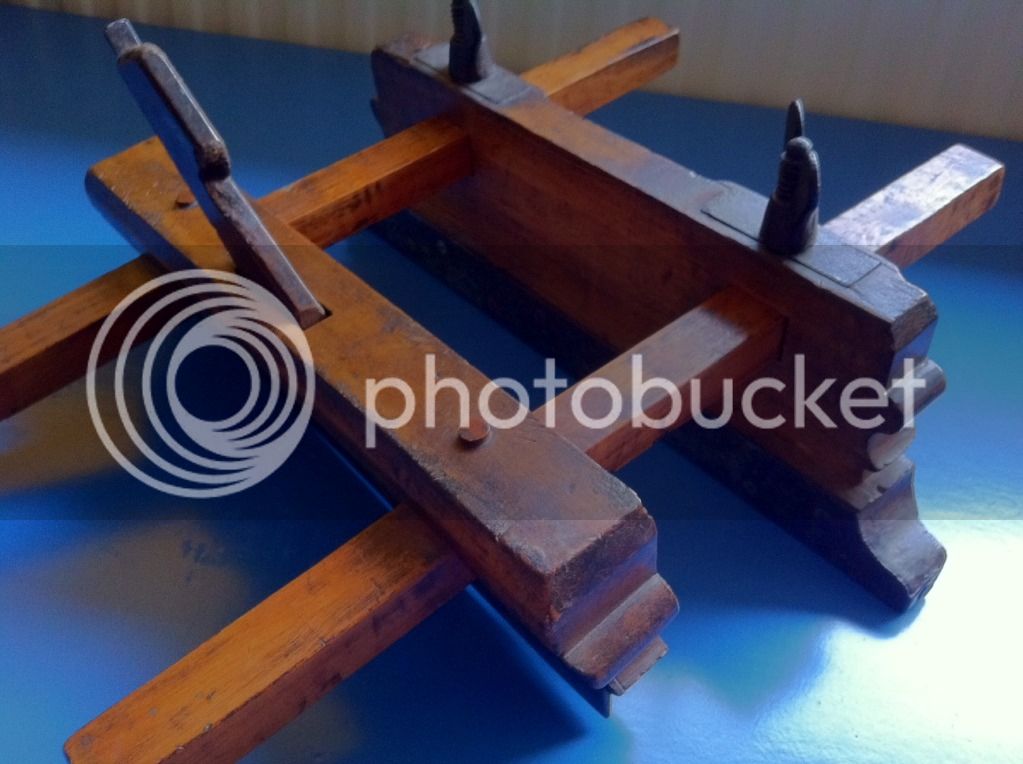
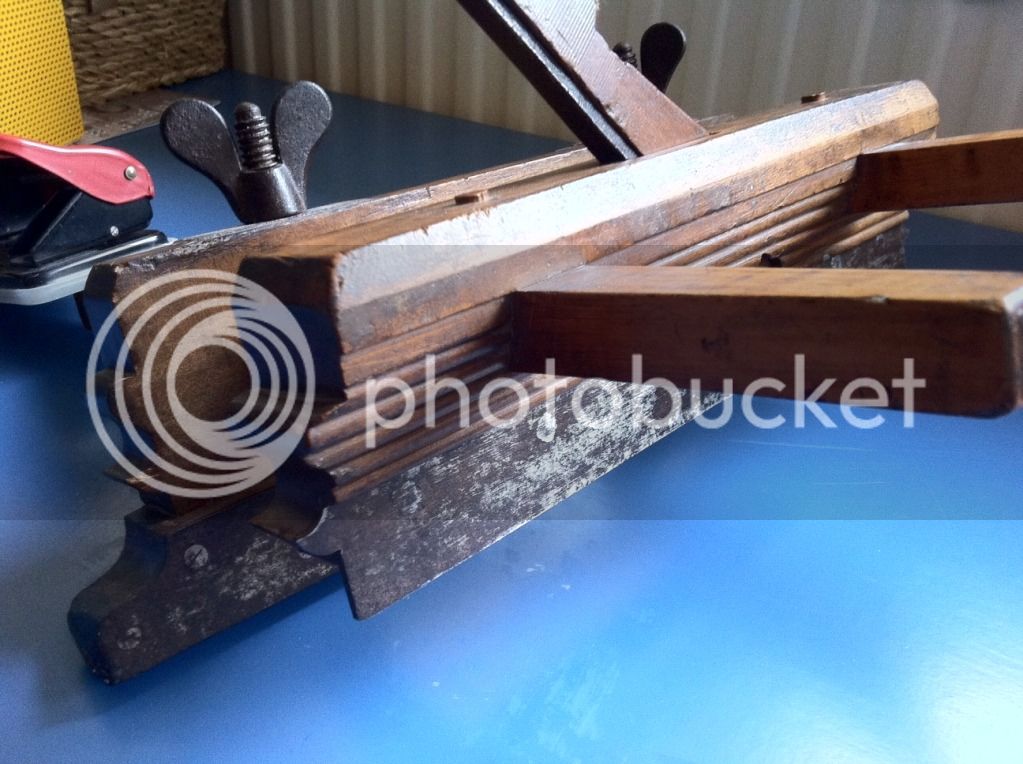
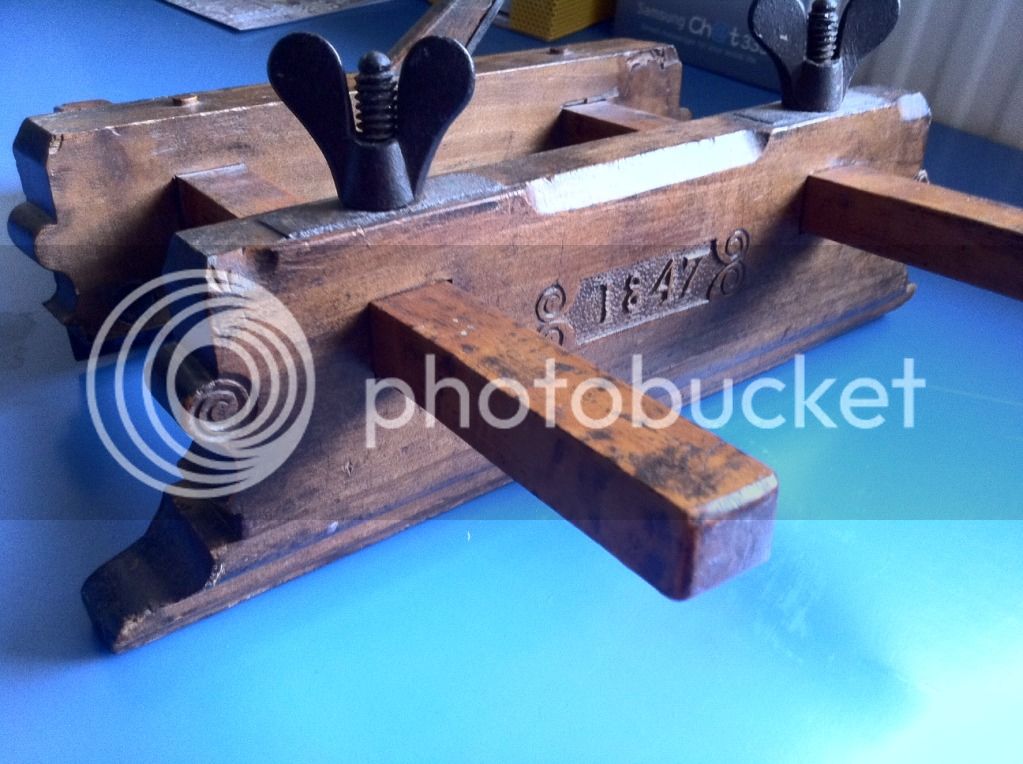
It's a rather late model from 1847. No makers stamp alas. It's nice to see there where still a few dedicated planemakers around who made these beautifull pieces. Apart from the iron, which doesn't fit at all, the plane is complete. The fence is nicely decorated, and the stock also has some nice decorative beads. An iron skate and an iron wear plate on the fence. The two spurs are atached to the stock with a single wooden pin. The fence has iron stirrups inside, which are tightened up against the spurs with these big nuts.
All in all it looks a bit crude, apart from the wood carvings. But it's a solid piece. I hope to find a better iron and see if it also works as nicely.
Enjoy.






































